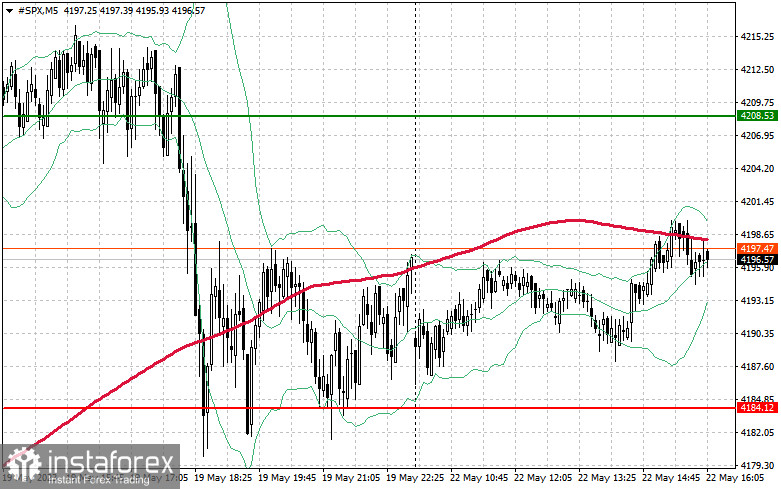
Apparently, until the issue of the US debt limit is fully resolved, counting on stock market growth is unlikely. Instead, the opposite is more likely to occur as June 1 approaches - the deadline for the US Treasury. Volatility will only increase, and pressure in the stock market will rise. The key question for investors is whether US politicians can reach an agreement to raise the debt limit before the government runs out of funds.
On Friday, there was a significant market downturn after Republican negotiators announced a suspension of talks. The seriousness of the situation was highlighted by Treasury Secretary Janet Yellen on Sunday, who stated that the chances of the US being able to pay all its bills by mid-June are quite low.
Concerns about the debt ceiling and the US economy have prompted investors to strengthen bearish positions on the S&P 500, which has risen to its highest level since 2007.
Meanwhile, Treasury bond yields have decreased along with the yields on two-year notes, which are sensitive to interest rates. This occurred because the money markets have reduced their expectations of a 25% interest rate hike in June. Federal Reserve Chairman Jerome Powell and Minneapolis Fed President Neel Kashkari have recently indicated that they support a pause in the tightening cycle.
Speaking at a conference in Washington, the head of the Central Bank noted that the initiatives of the Federal Reserve used to address issues in medium-sized banks have helped prevent the worst-case scenarios. However, Powell added that the problems of Silicon Valley Bank and other similar banks will have an impact on the economy in the future. "The financial stability tools helped to calm conditions in the banking sector. Developments there, on the other hand, are contributing to tighter credit conditions and are likely to weigh on economic growth, hiring, and inflation," said the head of the Fed.
Iron ore futures have been declining for the third consecutive day due to signs of disappointing demand for steel from the construction sector, while the latest batch of data on industrial and retail sales in China turned out to be unexpectedly weak.

As for the S&P 500 index, demand remains intact, and bulls have a good chance of continuing the trend. Bulls need to stay above $4,185, from where they may drag the price to $4,208. In addition, bulls should control the level of $4,229, which would strengthen the new bull market. If the index declines amid weak US statistics, bulls should protect $4,185 and $4,150. Breaking through this level, the trading instrument may return to $4,116 and $4,090.
 English
English 
 Русский
Русский Bahasa Indonesia
Bahasa Indonesia Bahasa Malay
Bahasa Malay ไทย
ไทย Español
Español Deutsch
Deutsch Български
Български Français
Français Tiếng Việt
Tiếng Việt 中文
中文 বাংলা
বাংলা हिन्दी
हिन्दी Čeština
Čeština Українська
Українська Română
Română

